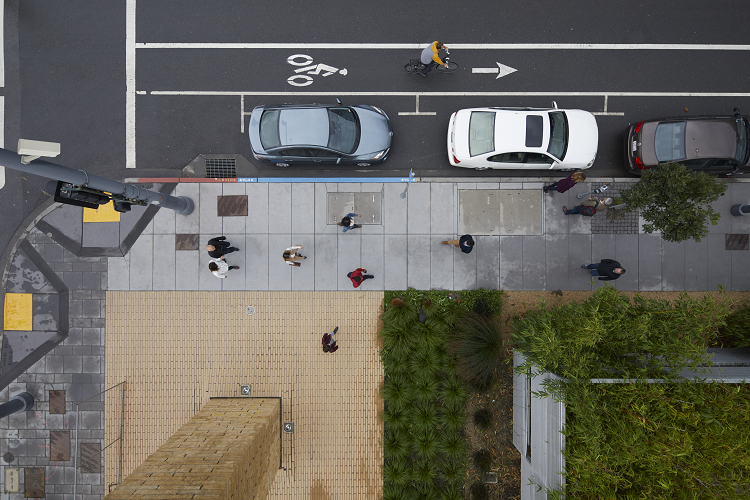By Gabe Klein, Co-Founder of CityFi and Special Venture Partner at Fontinalis Partners LLC
Imagine approaching an intersection on foot, and without doing anything, the traffic light senses your smartphone beacon and your pedestrian profile. The light changes as you reach the curb, allowing just the 12 seconds it takes you to cross before turning to red. Other than being convenient, this keeps vehicular traffic flowing while also allowing people of various ages and abilities, or with disabilities, to have the amount of time to cross the street customized to their needs.
While we’re not far from this, investing in technology to make roads and intersections safer for pedestrians, cyclists, passengers and drivers will take coordination across city and state governments and with private companies and citizens. But there’s more to a smart city than just traffic control, including open access to information (often created by citizens), public Wi-Fi and equitable connectivity, streamlining government systems and interfaces, and numerous other ways technology can improve quality of life.
Creating positive changes in people’s lives will only succeed if city governments communicate the strategy, benefits and costs of internet of things technology to those who live there. Technology can help city workers be more productive and facilitate feedback loops and smoother interactions with residents. Residents and businesses reap the benefits of faster, often proactive, action as well as overall better quality service and a higher level of trust for city government and its stewardship of tax dollars.
For example, putting instrumented trash cans in Washington, D.C., can track how full they are in real time and send a collection crew when needed instead of on a set schedule. That means fewer wasted city resources, and trash is collected in a timely manner, fewer rodents appear and fewer 311 complaints are made.
But none of this is possible without demonstrating to constituents the benefits that smart cities offer.
Here are a few best practices for city managers to consider:
- Make sure you’re building the right framework for your technology. We can’t be experts in everything, but having a flexible platform that’s easily upgraded and integrates new offers will ensure your investment remains sound for many years.
- Software as a service offerings (SAAS) can dramatically lower upfront costs, help to maintain the latest technology on a shared-development dime, and offload maintenance and server costs.
- Use the private sector to your advantage. Many new technologies are being deployed via public-private partnerships. Letting the private sector know what you are looking for via RFI or RFQ can help to bring the smartest resources at the best value with approaches that you may have never thought about. Also, sometimes companies big and small end up partnering to bring combinations that they hadn’t considered.
- Choose a trusted partner. Let companies compete for your business and be sure to tap into the expertise of private companies and consultants to help you make the best investments. Be sure to evaluate what you’re getting for the fully-loaded price – often the lowest price is not the best value so make sure you are putting out an RFP that is structured to deliver value. Choose the solutions that are as future-proof as possible with long-term commitment to service.
But most importantly, over-communicate with city workers, residents, private partners and other government officials. By clearly communicating the potential benefits, costs and expected return on investment for the taxpayer, you’ll have a better chance of creating goodwill and buy-in from all involved, which increases the likelihood of a successful project.
This can be as simple as explaining to residents that while new LED streetlights can cost more, they last twice as long for fully loaded cost savings when taking into account the cost of energy, maintenance and replacement. Or help people understand that new digital parking meters that accept payments from smartphones decrease the number of parking tickets but can increase revenue dramatically from parking as well as make people’s lives easier.
Being transparent about what is being accomplished and using data and analysis to back up your claims can help stakeholders understand why they need to invest more in technology. That will go a long way to creating the smart cities of our future, which will utilize technology to improve quality of life while sustaining our planet for the next generation.
Gabe Klein is a guest blogger for Verizon Smart Communities and Venues. He is a co-founder of CityFi, an advisory services firm, as well as former Commissioner of the Chicago and Washington Departments of Transportation. In both cities he revamped technology platforms and government processes while focusing on putting people first on city streets.
At Verizon, our goal is to improve the quality of life for people living in cities around the world and increase the ways and efficiency in which cities operate. It’s not just about smart technology, connectivity or applications; it starts with a focus on the people and their basic wants and needs. We partner with each city to design infrastructure, systems and processes that elevate the way they provide services in new and cost-effective ways.
